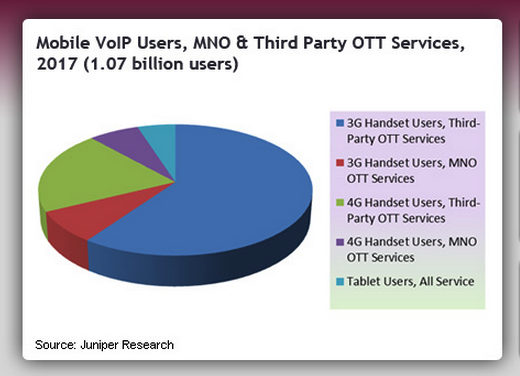
Juniper Research estimates that, in about five years, one out of seven mobile subscribers will be using mobile VoIP solutions.
The research firm estimates that the total number of mobile VoIP users will thus surpass 1 billion by 2017 (see graph below), applying immense pressure to the traditional revenue streams from circuit-switched voice solution providers.
Obviously, that should sound like music to the ears of the likes of Skype, Tango, Viber, fring and a host of other third-party OTT voice and video calling players. And, of course, it’s good news for users, too.
The trend is obvious and clear, and the resulting market movements are interesting to watch. For instance, look at Microsoft moving all its Windows Live Messenger users over to Skype, or one of its rivals, Rebtel, launching a ‘voice platform’ for iOS and Android, offering third-party developer ways to integrate VoIP calling into their apps.
Phone manufacturers aren’t standing still either, with RIM bringing voice calling to its BlackBerry Messenger (BBM) service, for instance.
Additionally, operators across Europe and beyond are banding together to launch and promote joyn, the consumer-facing ‘rich communications’ service conceived by mobile industry trade body GSMA, while individual carriers such as T-Mobile and Virgin Media looking at new ways to keep VoIP users closer to their chests.
Image credit: Thinkstock
Get the TNW newsletter
Get the most important tech news in your inbox each week.





